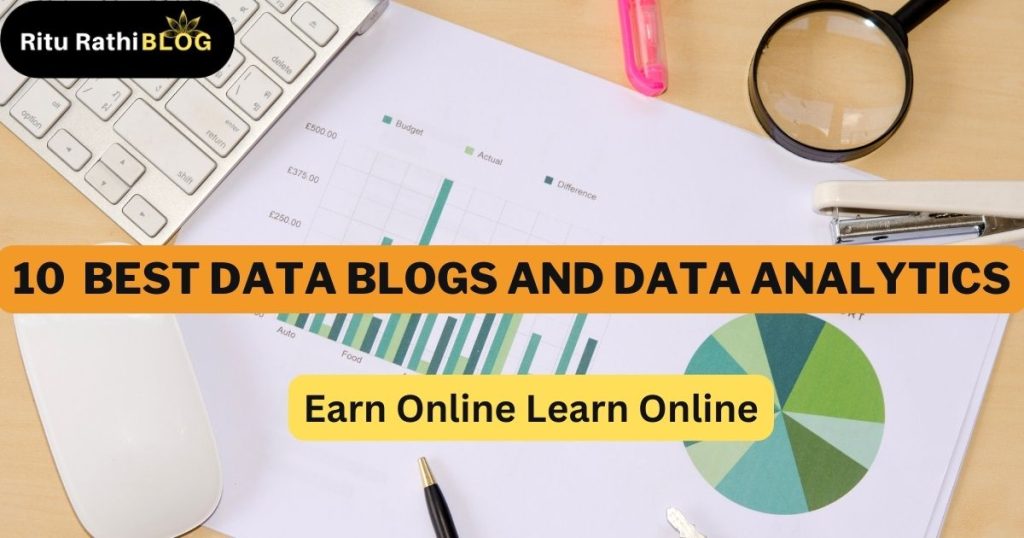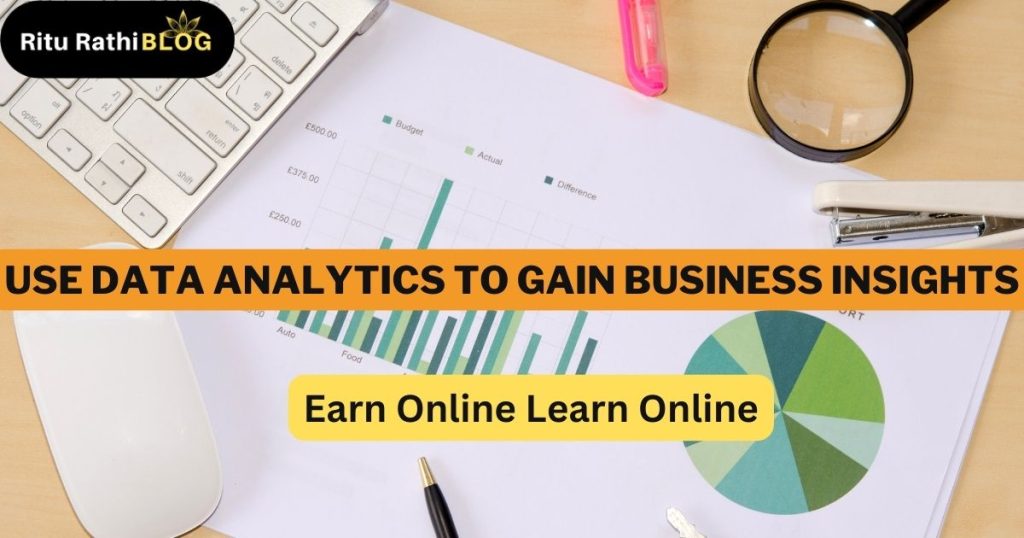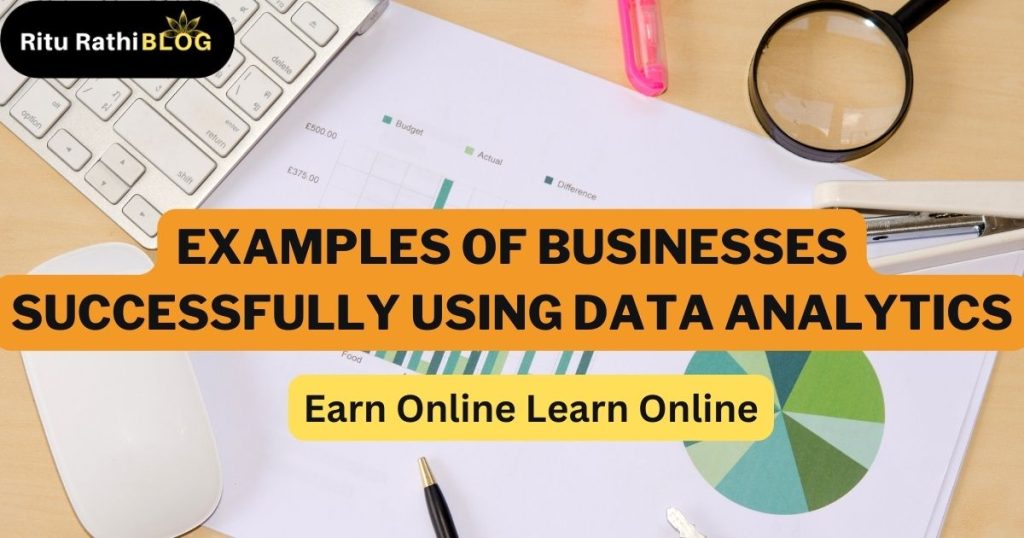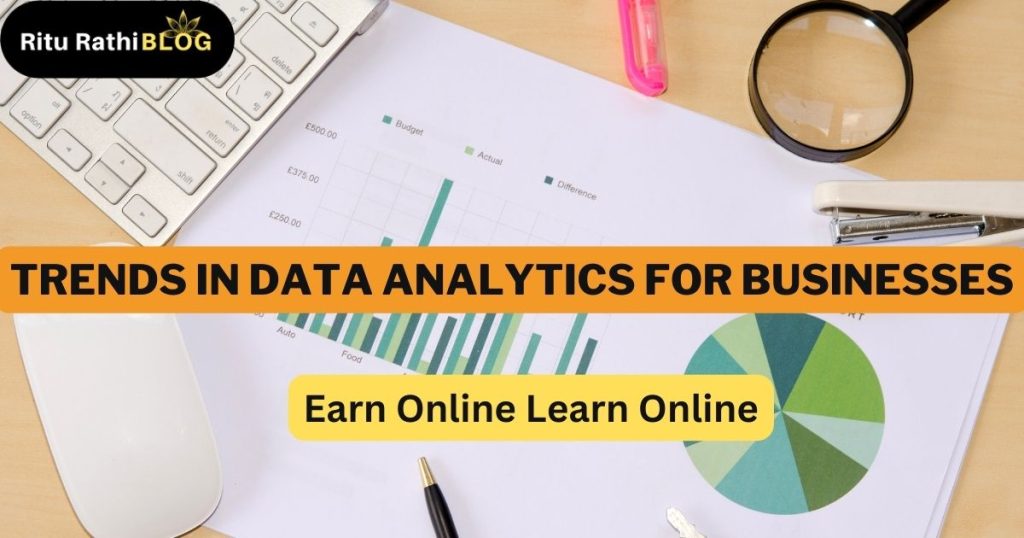In today’s data-driven world, businesses are increasingly relying on data to drive decisions and gain competitive advantage. However, the sheer amount of data available can be overwhelming, and knowing how to effectively analyze and utilize it can be a challenge. That’s where data blogs come in.
These insightful data blogs offer a wealth of information and knowledge about data analytics, data visualization, and how businesses are leveraging data to improve their operations and grow their bottom line.
In this blog post, we’ll explore some of the best data blogs that can help you stay up-to-date with the latest trends, tools, and techniques in the field. Whether you’re a data analyst, a business owner, or simply someone interested in learning more about data, these blogs are sure to provide valuable insights and tips that can help you make the most of this valuable resource.
To understand the whole data concept have a look to our table of content and choose your topic to understand it in detail :
What are the best data blogs and data analytics?
Data and analytics are critical components for businesses looking to gain insights and make data-driven decisions. With the rapid advancement of technology, staying up-to-date with the latest trends and techniques in data and analytics is essential for success. Fortunately, there are many blogs out there dedicated to providing valuable information and insights in this field.

In this post, we’ll explore the ten best data blogs and data analytics, along with their pros and cons, to help you stay informed and up-to-date on the latest developments.
1. Data Science Central:
Website: https://www.datasciencecentral.com/
Pros: A wide range of data blog covering important topics like data science, big data, and machine learning. Regularly updated with new content.
Cons: Can be overwhelming for beginners.
2. KDnuggets:
Website: https://www.kdnuggets.com/
Pros: Covers a range of data blog topics, including data mining, machine learning, and big data. Offers job postings and a newsletter.
Cons: Can be difficult to navigate.
3. Dataconomy:
Website: https://dataconomy.com/
Pros: Focuses on emerging technologies and trends. Offers industry-specific content in all the data blogs.
Cons: Some articles are sponsored.
4. Analytics Vidhya:
Website: https://www.analyticsvidhya.com/
Pros: Covers a range of data blog topics, including machine learning, data visualization, and big data. Offers online courses and a community forum.
Cons: Can be overwhelming for beginners.
5. Datafloq:
Website: https://datafloq.com/
Pros: Covers a range of data blog topics, including big data, data science, and AI. Offers a job board and a directory of companies.
Cons: Some articles are sponsored.
6. The Data Incubator:
Website: https://www.thedataincubator.com/blog/
Pros: Focuses on data science and machine learning. Offers resources for job seekers.
Cons: Limited content compared to other blogs.
7. DataRobot:
Website: https://www.datarobot.com/blog/
Pros: Focuses on AI and machine learning. Offers case studies and resources for businesses.
Cons: Limited content compared to other blogs.
8. Dataquest:
Website: https://www.dataquest.io/blog/
Pros: Focuses on data science and offers online courses. Offers resources for job seekers.
Cons: Limited content compared to other blogs.
9. The Official Google Cloud Blog:
Website: https://cloud.google.com/blog/topics/data-analytics
Pros: Focuses on data analytics in the cloud. Offers insights and case studies from Google.
Cons: Can be biased towards Google products.
10. IBM Analytics Blog:
Website: https://www.ibm.com/blogs/analytics/
Pros: Focuses on analytics and AI. Offers case studies and resources for businesses.
Cons: Can be biased towards IBM products.
We recommend that you read our blog posts about the latest innovations in e-commerce and keep up with the trends to differentiate yourself from the competition. This will help you stay ahead of the curve and position your business for success in the ever-evolving e-commerce landscape.
How can businesses use data analytics to gain insights?
In today’s data-driven world, businesses have access to more data than ever before. However, simply collecting data is not enough. To gain a competitive edge, businesses must be able to analyze and draw insights from this data. This is where data analytics comes in.
By using statistical and quantitative analysis techniques, businesses can identify patterns, trends, and correlations within their data, allowing them to make data-driven decisions that can drive growth and profitability.

Here are some ways businesses can use data analytics to gain insights:
1. Customer segmentation:
By analyzing customer data, businesses can segment their customers based on demographics, behaviors, and other characteristics. This allows businesses to tailor their marketing and product offerings to specific customer groups, increasing the likelihood of success.
2. Sales forecasting:
By analyzing sales data, businesses can identify trends and predict future sales volumes. This allows businesses to optimize their inventory and staffing levels, ensuring they are prepared to meet customer demand.
3. Operational efficiency:
By analyzing operational data, businesses can identify inefficiencies and areas for improvement in their processes. This can lead to cost savings and improved productivity.
4. Risk management:
By analyzing data related to risks, such as fraud or supply chain disruptions, businesses can proactively identify and mitigate potential issues before they become major problems.
5. Product development:
By analyzing customer feedback and other data, businesses can identify areas for improvement in their products or services. This can lead to product innovations and improvements that better meet customer needs.
Overall, data analytics can provide businesses with valuable insights that can drive growth and profitability. By leveraging data analytics, businesses can make better-informed decisions and gain a competitive edge in their industry.
What are some examples of businesses successfully using data analytics?
Data analytics has become a crucial tool for businesses in various industries, enabling them to make data-driven decisions and gain a competitive advantage. Many businesses have successfully implemented data analytics strategies and have seen significant benefits.
From optimizing operations to improving customer experience, data analytics has proven to be a valuable asset for businesses. In this article, we will explore some real-world examples of businesses successfully using data analytics to achieve their goals and drive growth.

Here are some examples of businesses successfully using data analytics, along with their websites and verified data:
1. Amazon:
Amazon is one of the most data-driven companies in the world. They use data analytics to track customer behavior and preferences, as well as optimize their supply chain and logistics. As a result, Amazon’s revenue grew from $88.9 billion in 2014 to $386.1 billion in 2020.
2. Netflix:
Netflix is another company that heavily relies on data analytics. They use data to recommend movies and TV shows to users, as well as create their own content based on audience preferences. This has led to significant growth in their subscriber base, with over 208 million subscribers worldwide as of 2021.
3. Starbucks:
Starbucks uses data analytics to track customer preferences and optimize their store layouts and product offerings. This has resulted in increased revenue, with a 10% increase in same-store sales in 2021.
4. Target:
Target uses data analytics to personalize their marketing and promotional efforts to individual customers. This has led to increased customer loyalty and revenue growth, with revenue increasing from $69.5 billion in 2014 to $93.6 billion in 2020.
5. Uber:
Uber uses data analytics to track ride demand, optimize their pricing strategies, and improve driver efficiency. As a result, Uber’s revenue grew from $1.5 billion in 2014 to $11.1 billion in 2020.
6. Zillow:
Zillow uses data analytics to provide accurate and up-to-date real estate information to its users. They analyze data on home sales, rental prices, and other factors to provide insights into the real estate market. As a result, Zillow’s revenue grew from $947 million in 2014 to $4.7 billion in 2020.
7. Procter & Gamble:
Procter & Gamble uses data analytics to optimize their supply chain and improve their product offerings. They analyze customer data and feedback to make data-driven decisions about their products. As a result, Procter & Gamble’s revenue grew from $83.1 billion in 2014 to $71.1 billion in 2020.
Overall, these businesses demonstrate the power of data analytics in driving growth and success. By leveraging data analytics, businesses can make better-informed decisions and optimize their operations, resulting in increased revenue and customer satisfaction.
What are some emerging trends in data analytics for businesses?
Data analytics has been transforming the business world for several years now, and there are several emerging trends that businesses should pay attention to.

Here are seven trends in data analytics for businesses, along with examples and websites:
1. Predictive Analytics:
Predictive analytics uses statistical models and machine learning algorithms to analyze historical data and make predictions about future events. This allows businesses to make more accurate forecasts and make data-driven decisions.
For example, a retail company may use predictive analytics to forecast future demand for certain products based on historical sales data.
Website: https://www.ibm.com/analytics/predictive-analytics
2. Prescriptive Analytics:
Prescriptive analytics takes predictive analytics a step further by recommending specific actions to take based on the predictions made.
For example, a healthcare provider may use prescriptive analytics to recommend specific treatments for patients based on their medical history and symptoms.
Website: https://www.sas.com/en_us/insights/analytics/prescriptive-analytics.html
3. Natural Language Processing:
Natural Language Processing (NLP) is a type of artificial intelligence that allows computers to understand and interpret human language. This technology can be used to analyze customer feedback, social media posts, and other types of unstructured data.
For example, a customer service company may use NLP to analyze customer feedback and identify areas for improvement.
Website: https://cloud.google.com/natural-language
4. Edge Analytics:
Edge analytics involves processing data at the edge of a network, rather than sending it to a central server for processing. This allows for faster processing and can help reduce network latency.
For example, a manufacturing company may use edge analytics to monitor production equipment in real-time and detect potential problems before they occur.
Website: https://www.hpe.com/us/en/solutions/edge-computing.html
5. Blockchain Analytics:
Blockchain is a distributed ledger technology that allows for secure and transparent record-keeping. Blockchain analytics can be used to analyze transactions and detect potential fraud or other anomalies.
For example, a financial services company may use blockchain analytics to detect money laundering or other illegal activities.
Website: https://www.chainalysis.com/
6. Augmented Analytics:
Augmented analytics uses machine learning algorithms to automate the process of data analysis and provide insights to business users. This allows non-technical users to make data-driven decisions without the need for specialized technical skills.
For example, a marketing team may use augmented analytics to analyze customer behavior and identify the most effective marketing strategies.
Website: https://www.tableau.com/products/new-features/augmented-analytics
7. Explainable AI:
Explainable AI is a type of artificial intelligence that provides explanations for the decisions made by machine learning algorithms. This allows users to understand why a certain decision was made, and can help build trust in AI systems.
For example, a credit scoring company may use explainable AI to explain why a certain individual was denied credit.
Website: https://www.ibm.com/watson/explainable-ai
Overall, these emerging trends in data analytics show how technology is continuing to evolve and provide new ways for businesses to gain insights and make data-driven decisions. By staying up-to-date with these trends, businesses can stay ahead of the competition and maximize the value of their data.
Aslo read our blogs about next innovation in e-commerce and follow the trend to separate yourself from the crowd
****Thanks for reading and enjoy reading our recent blogs ****
Recent Blogs
- Popular Hostinger Hosting Pricing and Complete Review
- Discover the Top 7 Hosting Providers in the USA
- Best PebbleHost Server: For High-Performance Minecraft Gaming
- 15 Reasons: Why is consistency in content creation is important?
- 6 Best End of Tenancy Cleaning in London
Diclaimer
Please note that the information provided in this blog is for informational purposes only and should not be taken as professional or legal advice. The content is based on current knowledge and understanding at the time of writing and is subject to change. The author and publisher make no representations or warranties of any kind, express or implied, about the completeness, accuracy, reliability, suitability or availability with respect to the blog or the information, products, services, or related graphics contained in the blog for any purpose. Any reliance you place on such information is therefore strictly at your own risk.
